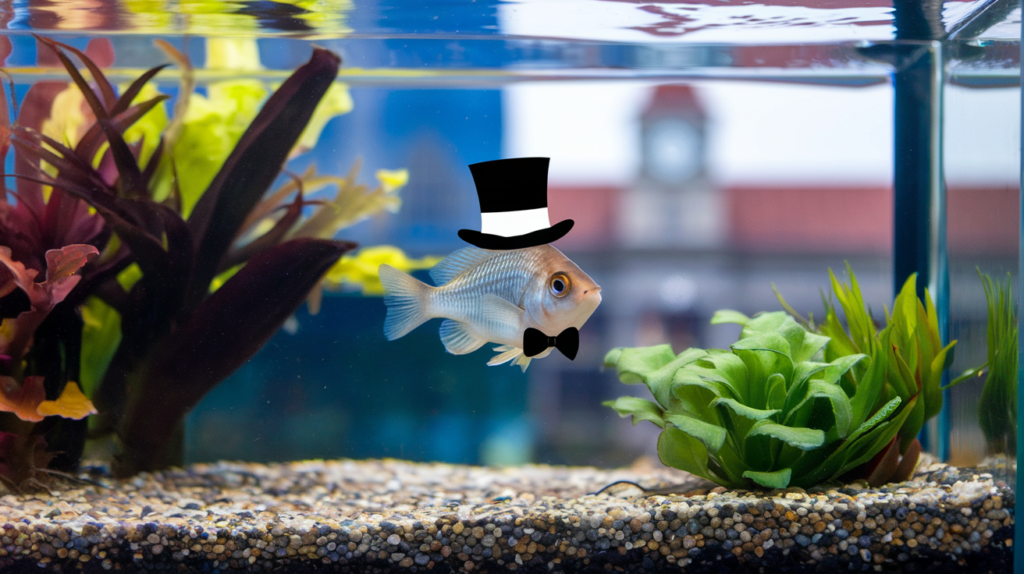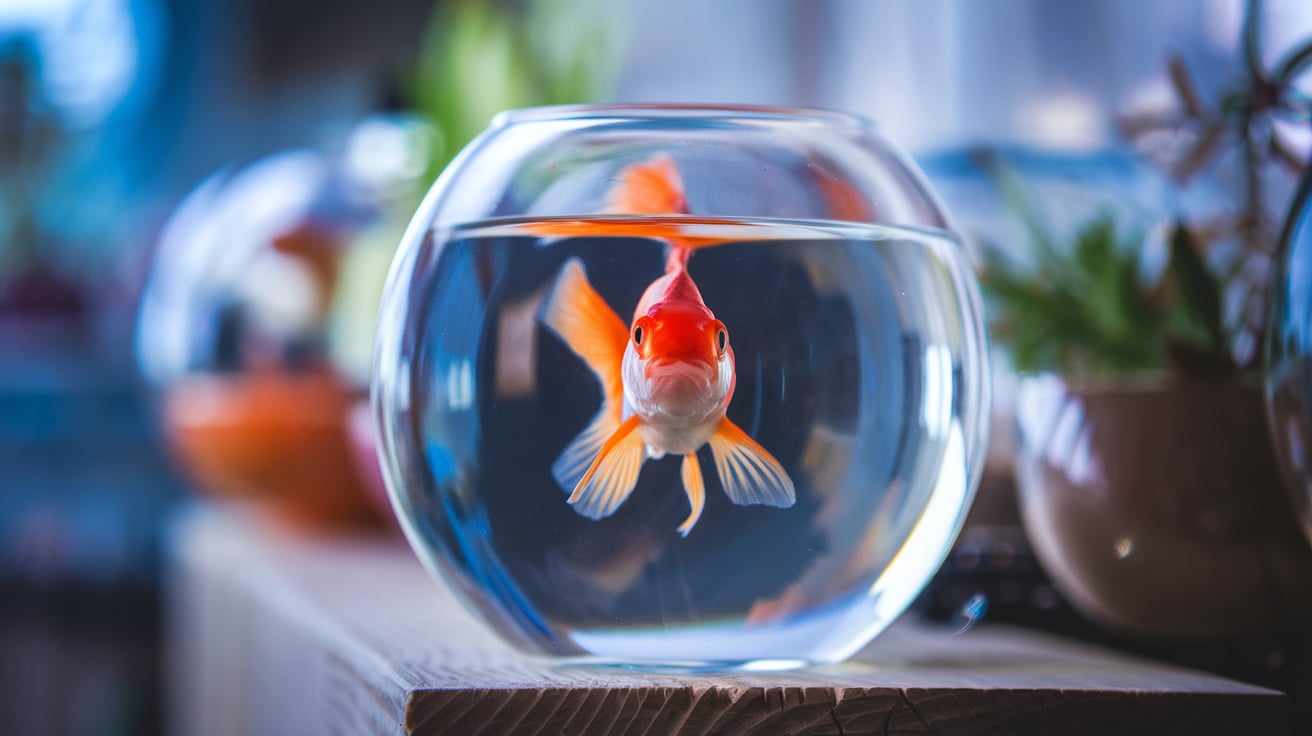Introduction to Cute:dvql5n9v310= Fish
Cute:dvql5n9v310= fish encompass a variety of small, lively, and often vibrantly colored species that have captured the hearts of aquarists and nature enthusiasts alike. These fish are prominent for their petite size and quirky behaviors, which evoke a sense of joy and wonder in observers. The distinct appeal of cute:dvql5n9v310= fish is not just in their appearance but also in their interactions, making them fascinating additions to both home aquariums and natural habitats.
The charm of these aquatic creatures stems from their diverse characteristics. Many cute:dvql5n9v310= fish exhibit bright colors and unique patterns, making them visually captivating. For instance, species such as the Betta fish and Neon Tetra are renowned for their eye-catching hues and lively movements. Their small stature allows for creative aquarium setups, where they can thrive alongside various aquatic plants and decorations, enhancing the aesthetic appeal of the tank.
Moreover, the behavior of cute:dvql5n9v310= fish often adds to their desirability. They are known for engaging in playful activities, displaying curious tendencies as they explore their environment. This behavior can provide hours of entertainment for those who appreciate watching these creatures interact with each other and their surroundings. The popularity of cute:dvql5n9v310= fish is further amplified by their relatively low maintenance needs, making them suitable for both novice and seasoned aquarists.
In conclusion, cute:dvql5n9v310= fish offer a delightful glimpse into the underwater world, showcasing vibrant aesthetics and charming behaviors that endear them to many. Their appeal transcends mere visual fascination, involving a deeper appreciation for the dynamics of aquatic life. As we delve deeper into the world of cute fish, we will explore more about their specific types, care modalities, and the impact they have on their environments.
The Biological Classification of Cute:dvql5n9v310= Fish
The cute:dvql5n9v310= fish belong to the vast and diverse animal kingdom, specifically within the phylum Chordata, which encompasses all animals possessing a notochord at some stage of their development. These aquatic creatures are classified under the subphylum Vertebrata, recognizing their backbone, which distinguishes them from invertebrates. Within this subphylum, cute:dvql5n9v310= fish fall under the class Actinopterygii, commonly known as ray-finned fishes. This group represents the largest class of vertebrates, exemplifying tremendous diversity in form and lifestyle.
Within the class Actinopterygii, cute:dvql5n9v310= fish are further categorized into various orders. Depending on the specific species, they may belong to well-known orders such as Perciformes or Cypriniformes, which include a vast number of familiar and beloved fish types. For example, the order Perciformes is noted for its high degree of variability, housing species that range from the playful clownfish to the vibrant angelfish, both recognized for their appealing characteristics.
As we delve deeper into their classification, cute:dvql5n9v310= fish can be identified by their family and genus. Families such as Gobiidae (gobies) and Cichlidae (cichlids) boast a multitude of species that contribute to their endearing appeal and play significant roles in their respective ecosystems. Each family includes numerous genera, which help further clarify the biological relationships among varied cute:dvql5n9v310= fish species. Through scientific methods, taxonomists assign species names that reflect these classifications, allowing us to understand not only their evolutionary history but also their ecological significance.
Habitat and Distribution of Cute:dvql5n9v310= Fish
Cute:dvql5n9v310= fish are cherished not only for their adorable appearance but also for the diversity of their habitats. These delightful aquatic creatures are predominantly found in freshwater environments, where they thrive in rivers, lakes, and ponds. Their presence is also noted in brackish and saltwater habitats, albeit less commonly. Regions with lush vegetation and ample hiding spots tend to support larger populations of these fish, as they provide crucial shelter from predators and a rich source of food.
Geographically, cute:dvql5n9v310= fish are distributed across various continents, with notable populations in North America, Asia, and parts of Africa. In North America, species such as the Betta fish can be located in shallow waters, often in rice paddies and slow-moving streams. Meanwhile, some tropical variants are native to Southeast Asia and are often found in densely vegetated areas, which serve as ideal breeding grounds.
The environmental conditions in which cute:dvql5n9v310= fish thrive vary significantly, influencing their behavior and physical characteristics. For example, in areas with warmer waters, such as those found in tropical climates, these fish tend to display a more vibrant coloration. Conversely, in cooler freshwater habitats, their tones might be more subdued, enabling them to blend in with their surroundings. Additionally, factors such as water quality, availability of food, and the presence of competing species can directly impact the population dynamics and distribution of these charming fish.
Understanding the preferred habitats of cute:dvql5n9v310= fish offers insights into their ecological roles and how disturbances in their environments can affect their populations. Protecting these natural settings is vital for the conservation of these endearing aquatic species.
Diet and Feeding Habits of Cute:dvql5n9v310= Fish
Cute:dvql5n9v310= fish, a diverse group admired for their charming appearances, exhibit varied dietary preferences that reflect their habitats. Generally, these delightful aquatic creatures can be classified into three primary categories based on their feeding habits: herbivores, carnivores, and omnivores. Each category showcases unique adaptations and dietary strategies that enable them to thrive in their respective ecosystems.
Herbivorous cute:dvql5n9v310= fish primarily consume algae, aquatic plants, and detritus. Species such as the parrotfish possess specialized teeth designed to scrape algae off rocks and coral surfaces, showcasing a remarkable adaptation that optimizes their foraging efficiency. In contrast, carnivorous varieties, like the angelfish, primarily feed on smaller fish, crustaceans, and zooplankton, utilizing their keen eyesight and swiftness to capture prey. Their hunting strategies often involve ambush tactics or schooling behaviors for enhanced success.
Omnivorous cute:dvql5n9v310= fish, such as the guppy, display versatility in their diets, consuming both plant material and animal matter. This adaptability allows them to survive in varying environments where food resources may fluctuate. Cute:dvql5n9v310= fish forage for food using various techniques, including bottom feeding, surface feeding, and filter feeding, each tailored to their anatomical features and ecological niche.
In many instances, cute:dvql5n9v310= fish have developed specialized adaptations for nutrient acquisition. For example, some species have elongated bodies that enable them to reach food in crevices, while others possess flat bodies that allow them to graze efficiently along substrates. These feeding habits illustrate not only the diversity within the cute:dvql5n9v310= fish category but also their integral role in maintaining the health and balance of aquatic ecosystems.
Breeding and Reproduction of Cute:dvql5n9v310= Fish
The breeding behaviors and reproductive cycles of cute:dvql5n9v310= fish are as fascinating as they are diverse. Each species within this category exhibits distinct mating rituals characterized by intricate courtship displays. For instance, male cute:dvql5n9v310= fish often engage in vibrant and colorful presentations, such as rapid swimming maneuvers or elaborate fin displays, to attract females. This visual spectacle is not just for show; it serves as a key mechanism in ensuring successful mating.
Once a female has been courted successfully, the next phase involves egg-laying. Cute:dvql5n9v310= fish typically lay their eggs in carefully selected sites that offer protection and optimal conditions for the developing embryos. Depending on the species, the number of eggs laid can vary significantly, ranging from a few dozen to several hundred. The eggs are often adhesive, allowing them to stick to the substrate or vegetation, minimizing the risk of being swept away by currents.
Parent care is another captivating aspect of cute:dvql5n9v310= fish reproduction. Many species exhibit a remarkable degree of parental investment. For example, some males will guard the nest site vigilantly, ensuring the safety of the eggs from potential predators. In certain species, both parents participate in the care of their young, exhibiting behaviors such as fanning the eggs with their fins to supply oxygen. On the other hand, there are species in which the adult cute:dvql5n9v310= fish display little to no parental care, with the eggs left to fend for themselves in the aquatic environment.
Unique reproductive traits are also found across the different species within the cute:dvql5n9v310= fish category. Some have developed specialized methods, such as mouthbrooding, where one parent carries the fertilized eggs in their mouth until they hatch, ensuring safety during this vulnerable period. Understanding these diverse reproductive strategies not only showcases the adaptability of cute:dvql5n9v310= fish but also highlights their vital role in maintaining ecological balance. In conclusion, the breeding behaviors of these adorable aquatic creatures are intricate and varied, adding depth to our appreciation of their existence.
Behavioral Traits of Cute:dvql5n9v310= Fish
Cute:dvql5n9v310= fish are known not only for their appealing appearances but also for their intriguing behavioral traits. Observing their social interactions provides insight into their vibrant aquatic lives. These little creatures often display a range of social behaviors, including schooling. In the wild, many species prefer to swim in groups, which enhances their safety and allows them to feed more efficiently. This collective movement can create mesmerizing patterns in the water, contributing to their ‘cute’ reputation.
Communication plays a significant role in the lives of cute:dvql5n9v310= fish. They utilize a variety of methods to convey information, including color changes, body language, and sounds. For instance, some species alter their coloration to signal distress or to attract mates, demonstrating a sophisticated understanding of their environment. Others produce subtle sounds, which, while difficult for humans to hear, serve as important communication tools among themselves. These interactions are vital for maintaining social hierarchies and establishing connections within groups.
Swimming patterns further exemplify the unique behaviors of cute:dvql5n9v310= fish. Many exhibit lively and agile movements that showcase their playful nature. They often dart through coral reefs or navigate through plants, displaying curiosity and energy. This buoyant swimming style not only captures the hearts of observers but also aids in their survival by keeping them swift and elusive as they evade predators. Moreover, certain species have been observed engaging in playful behaviors, such as chasing each other or investigating novel objects in their environment, which further enhances their adorable image.
In summary, the behavioral traits of cute:dvql5n9v310= fish encompass their social interactions, communication methods, and dynamic swimming patterns. These behaviors not only enrich their lives but also enhance the captivating allure of these charming aquatic creatures.
Conservation Status of Cute:dvql5n9v310= Fish
The conservation status of various species of cute:dvql5n9v310= fish has garnered increasing attention in recent years due to the numerous threats they face in their natural habitats. One of the primary challenges is habitat degradation, often driven by human activities such as urbanization, pollution, and destructive fishing practices. These charming aquatic creatures depend on healthy aquatic ecosystems, and the deterioration of their habitats directly impacts their populations. Furthermore, climate change poses significant risks by altering water temperatures and affecting food availability, thereby disrupting their breeding patterns and ecological balance.
Overfishing is another critical factor threatening cute:dvql5n9v310= fish. Many species are either captured for commercial purposes or collected for the aquarium trade, leading to severe declines in their populations. As a result, some species have become endangered, requiring immediate conservation interventions. Conservation organizations worldwide are actively working to address these issues through various initiatives aimed at protecting these adorable fish. These initiatives often include habitat restoration, establishing marine protected areas, and advocating for sustainable fishing practices to ensure that cute:dvql5n9v310= fish can thrive in their natural environments.
Public involvement plays a crucial role in these conservation efforts. Individuals can help protect cute aquatic species by supporting sustainable seafood initiatives, reducing plastic usage, and advocating for water conservation. Additionally, participating in local clean-up efforts and spreading awareness about the importance of biodiversity can create a positive impact. It is essential for communities to recognize the value of preserving these unique species, not just for their aesthetic appeal but also for the overall health of our ecosystems. By joining together to protect cute:dvql5n9v310= fish, we can contribute to a vibrant and diverse aquatic world that future generations can enjoy.

Tips for Keeping Cute:dvql5n9v310= Fish in Aquariums
Maintaining a healthy environment for your cute:dvql5n9v310= fish is essential for their well-being and longevity. First, it is crucial to choose an appropriate aquarium size. While some species thrive in smaller tanks, many require more space to swim and explore. A general rule of thumb is to provide at least 20 gallons of water for communities of small fish, ensuring they have ample room to thrive and reduce territorial disputes.
Water quality is paramount when keeping cute:dvql5n9v310= fish. Regular testing of pH levels, ammonia, nitrites, and nitrates is vital. Most species prefer slightly acidic to neutral water (pH level between 6.5 and 7.5). It’s also important to maintain stable water temperatures, typically between 74°F and 78°F, depending on the specific species of cute:dvql5n9v310= fish. Using a high-quality filter will help maintain clean water and create a healthy environment.
Compatibility with other species must also be considered. Many cute:dvql5n9v310= fish are peaceful and can coexist with various aquatic neighbors; however, some may exhibit territorial behavior. It is advisable to research and carefully select tank mates that share similar behaviors and water requirements to promote a harmonious aquarium environment.
Feeding your cute:dvql5n9v310= fish a varied diet contributes significantly to their health and happiness in captivity. High-quality flake food, along with live or frozen foods like brine shrimp or bloodworms, can provide the necessary nutrients. Additionally, ensuring the tank is enriched with hiding spots and decorations will help alleviate stress and promote natural behaviors.
By following these guidelines, aquarists can create a thriving environment for their adorable aquatic companions, enhancing both the aesthetic and ecological aspects of their aquariums.
Conclusion: The Allure of Cute:dvql5n9v310= Fish
Throughout this exploration of the enchanting world of cute:dvql5n9v310= fish, we have uncovered the many characteristics that make these aquatic creatures truly remarkable. From their vibrant colors to their unique behaviours, these fish capture our attention and affection, distinguishing themselves within the vast aquatic realm. Whether residing in the gentle motion of a home aquarium or the expansive waters of the wild, cute:dvql5n9v310= fish exhibit an undeniable charm that speaks to fish lovers and nature enthusiasts alike.
Moreover, beyond mere aesthetics, these adorable fish play crucial roles in their ecosystems, contributing to the biodiversity of marine environments. Their presence enhances not only the beauty of aquatic spaces but also the health of their habitats. As we have seen, various species of fish come with their unique traits and contributions, each adding to the intricate tapestry of life beneath the waves.
In recognizing the allure of cute:dvql5n9v310= fish, it is essential to advocate for their protection and conservation. Many species face threats from habitat destruction and pollution, highlighting the need for conscious efforts to preserve their natural environments. Enthusiasts and advocates can raise awareness and participate in initiatives that promote responsible practices within the aquarium trade and marine conservation.
In summary, the world of cute:dvql5n9v310= fish invites us to appreciate the intricate beauty and diversity of aquatic life. Their endearing nature makes them more than just pets; they are ambassadors for the essential work of preserving our planet’s ecosystems. We encourage you to further explore these charming creatures, whether through personal aquarium setups or by engaging with marine conservation efforts. By celebrating these delightful fish, we ensure their continued presence for future generations to admire.
you may also read


